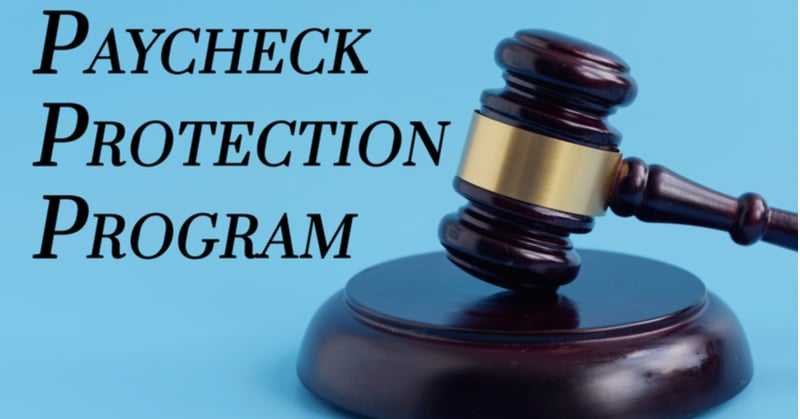August 8, 2020—that’s when the Paycheck Protection Program (PPP) closed. Now here we are, in 2021, with a reopened and recharged PPP that’s accepting applications from first- and second-time borrowers.
The other best part? This PPP 2.0 now has additional qualifying expenses, an easier forgiveness application, and a flexible covered period. And, you don’t have to worry about choosing between taking out a Paycheck Protection Program loan and claiming the Employee Retention Credit (ERC).
Here’s what you need to know about the new and improved program.
PPP 2.0 in under 4 minutes
If you’re thinking about applying for a Paycheck Protection Program loan, you likely have questions. And if you’re looking for an easy-to-digest rundown, we have answers.
The Consolidated Appropriations Act, which was signed into law on December 27, 2020, extended a number of financial relief measures that had run out of funding, time, or both. This includes the much-discussed Paycheck Protection Program.
Created to encourage employers struggling during the pandemic to retain employees, the Paycheck Protection Program provides forgivable loans to small companies. The CARES Act originally established the program, and the Consolidated Appropriations Act reopened and expanded it.
Changes to the Paycheck Protection Program include:
- New application deadline
- Loan opportunities for second-time borrowers
- Expanded applicant eligibility for businesses
- Additional qualifying expenses
- Ability to claim the ERC and take out a PPP loan
- Tax deduction rules
- Simplified forgiveness application
Ready to dive in?
-
-
- 1. New application deadline
-
With $284 billion in additional funding, the Paycheck Protection Program is once again open for business. But, that funding is good for a limited time only.
The program opened to first-time borrowers on January 11, 2021. PPP 2.0 opened to second-time borrowers on January 13, 2021.
All borrowers have until March 31, 2021 to apply for a PPP loan. Unless Congress passes new legislation to extend the program, March 31 is when the Paycheck Protection Program stops being open for business.
Reminder: Although March 31 is the new application deadline, funds are limited. If the PPP runs out of funding before this date (and does not receive new Congressional funding), the program end date will be sooner.
And because the PPP is open to first- and second-time borrowers—and has less funding than ever before—loans are sure to go fast.
- 2. Loan opportunities for second-time borrowers
One brand-new feature of PPP 2.0 is that it’s open to business owners who received a Paycheck Protection Program loan in 2020. That’s right—you might be eligible for a second PPP loan under the Consolidated Appropriations Act.
You can apply for a “Second Draw” PPP loan any time after January 13, 2021 if you:
- Employ 300 or fewer employees
- Spent all of your previous PPP loan funds
- Had gross receipts in a 2020 quarter that were at least 25% less than the same 2019 quarter
- Don’t engage in political or lobbying activities, describe yourself as a think tank, or are not affiliated with businesses in China
- Don’t receive a Shuttered Venue Operator Grant (a new program under the Consolidated Appropriations Act)
If you meet all of the above criteria, keep in mind that your loan cap is less than the $10 million threshold for first-time applicants. Second-time borrowers can only take PPP loans of up to $2 million out.
- 3. Expanded applicant eligibility for businesses
In addition to letting second-time borrowers take part in the new round of PPP lending, PPP 2.0 has expanded other applicant eligibility.
Small nonprofits, media organizations, destination marketing organizations, and housing cooperatives with 300 or fewer employees may now have the ability to obtain a PPP loan.
- 4. Additional qualifying expenses
The Paycheck Protection Program is based on the premise that you can get your loan forgiven if you spend it on eligible expenses. Before the Consolidated Appropriations Act, those expenses included:
- Payroll costs (salaries, wages, commissions, or tips; employee benefits such as vacation; and state and local taxes)
- Non-payroll costs (interest on mortgages, rent, and utilities)
Now, you can also use the loan proceeds on the following qualifying expenses and be eligible for loan forgiveness:
- Group life, disability, vision, and dental insurance
- Operations expenditures
- Property damage
- Supplier costs
- Worker protection expenditures (e.g., personal protective equipment)
- 5. Ability to claim the ERC and take out a PPP loan
Originally, employers had to choose between claiming the Employee Retention Credit and taking out a Paycheck Protection Program loan.
Not anymore.
Thanks to PPP 2.0, you can now take advantage of both financial relief measures. And, keep in mind that the Employee Retention Credit also got a makeover thanks to the new legislation. The ERC is extended through June 30, 2021 and has a tax credit maximum increase to $14,000 (up from $5,000).
- 6. Tax deduction rules
Were you worried about whether you could deduct business expenses paid with a PPP loan from your taxes? If so, you’re not alone.
Employers have been waiting for clarification from the government on how the Paycheck Protection Program would impact taxes. The Consolidated Appropriations Act sets the record straight.
PPP recipients can deduct business expenses paid with their loan—even if it’s forgivable—from their taxes.
- 7. Simplified forgiveness application
If you’ve been thinking about taking a PPP loan out but are worried about a confusing forgiveness application, fear not.
PPP 2.0 comes with a simplified application for borrowers who take out loans of $150,000 or less.
Not to mention, you can choose between an eight-week and 24-week covered period, giving you greater flexibility in achieving PPP loan forgiveness.
Applicants who take out loans under this $150,000 threshold do not need to “submit any application or documentation in addition to the certification and information required to substantiate forgiveness” when applying for loan forgiveness.
In layman’s terms, you only need to worry about filling out forgiveness-related information and certifying that the information you provide is accurate.
.png?width=150&height=63&name=TWRlogo-regmark_blueblack%20(1).png)
.png)










Do you have questions about this article? Email us and let us know > info@woodard.com
Comments: